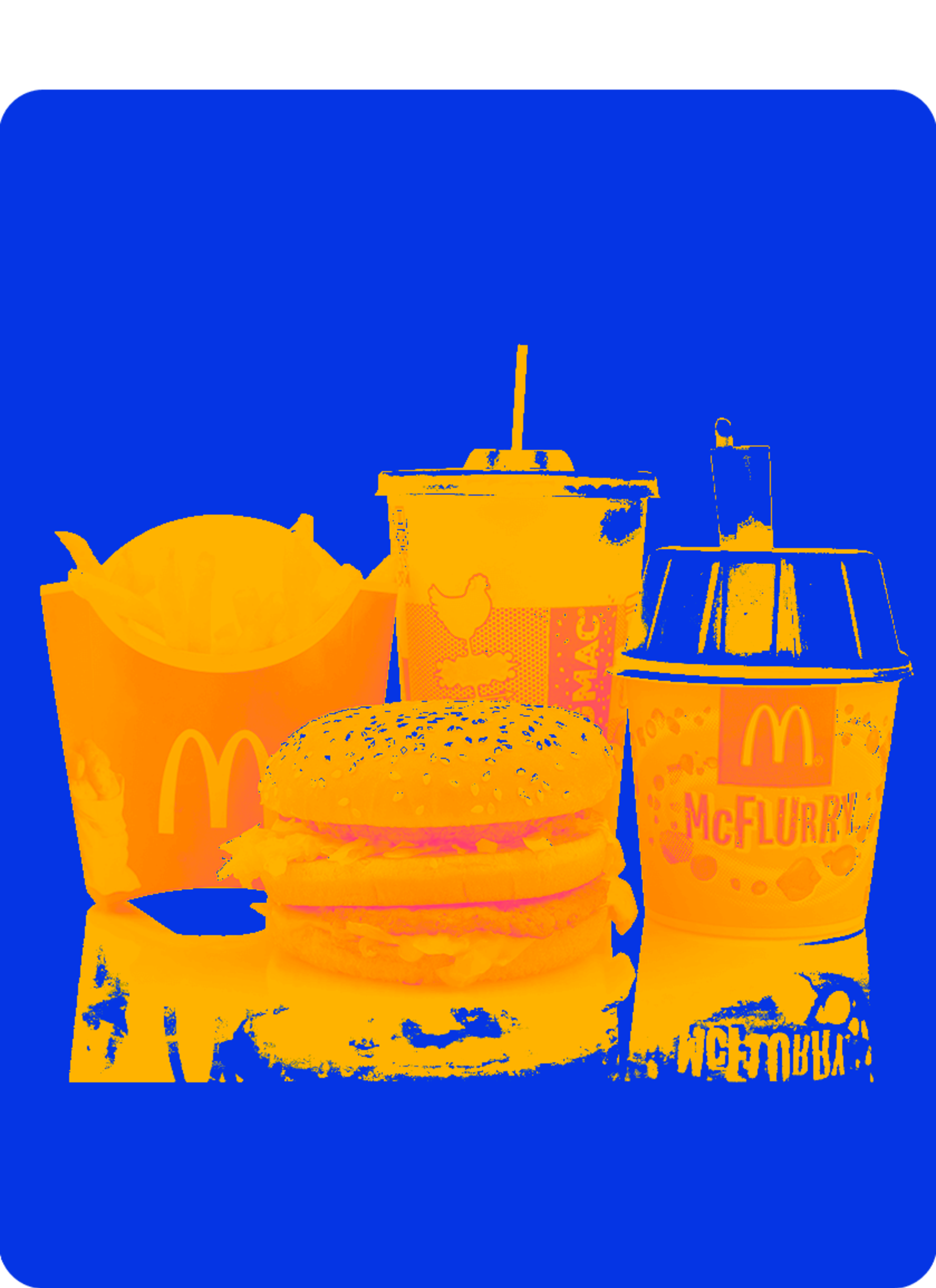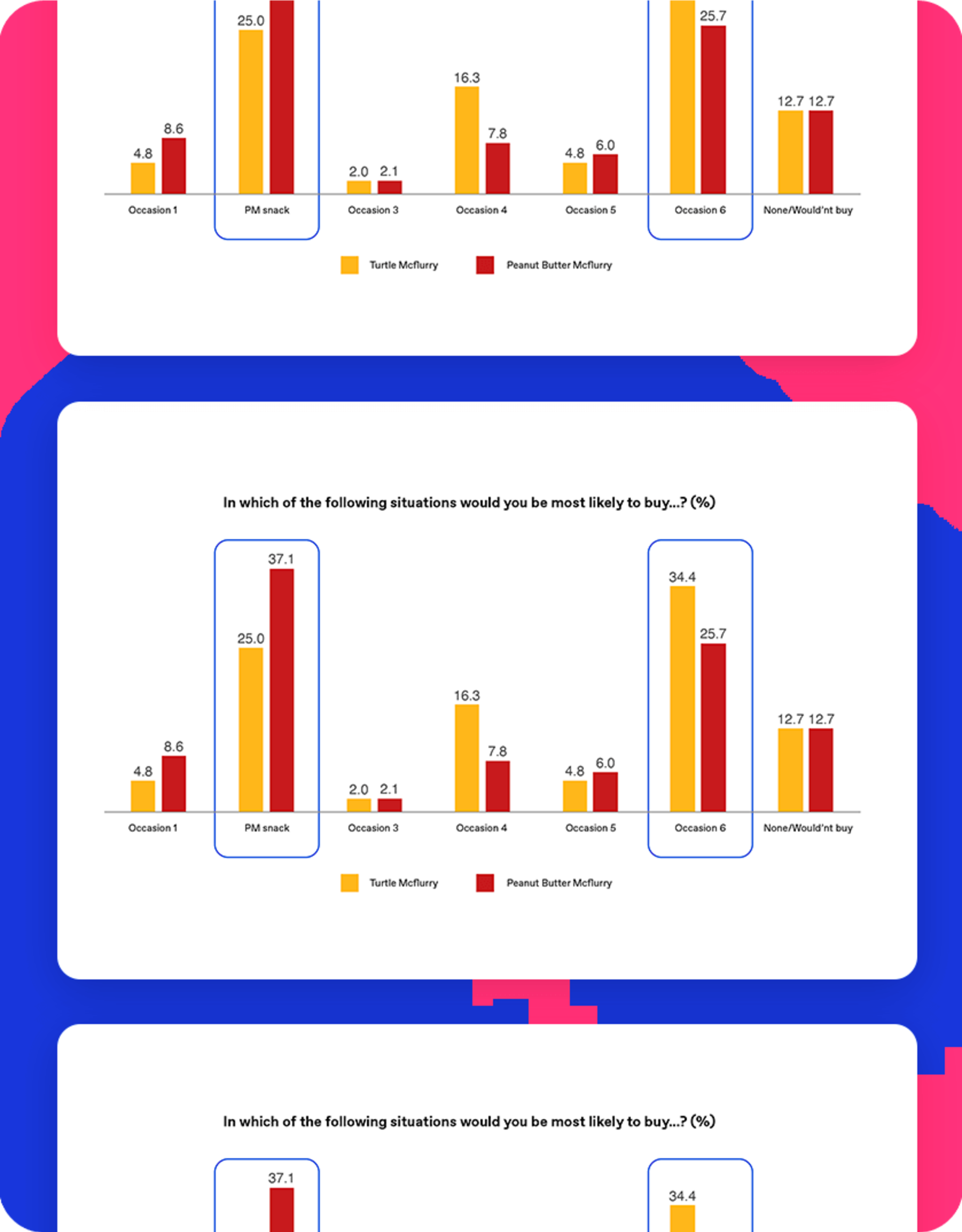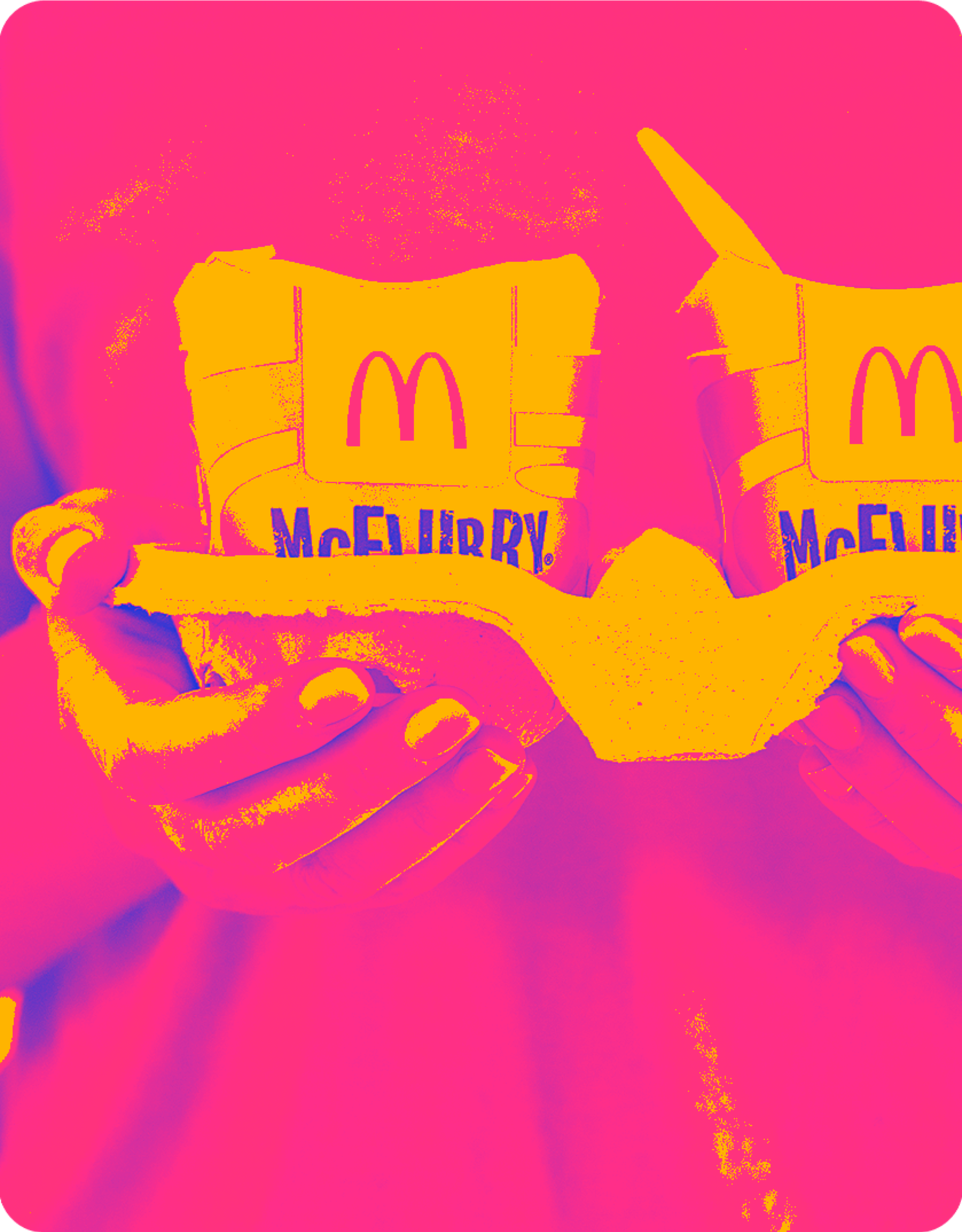Webinar: Quantifying the Impact of Continuous and Connected Consumer Insights
SIGN UP NOWMcDonald’s spots winning McFlurry flavors
Take a look at how McDonald’s used early-stage testing to spot the McFlurry flavors that would appeal to consumers and meet specific company goals at the same time.
Key outcomes
Finding the winning flavors
Identified two McFlurry flavors that would most appeal to consumers and meet company goals
Getting the right ideas
Prioritized the right ideas from the start with early testing and first-in industry profiling
Understanding consumer needs
Gained context to understand which McFlurry concepts met specific consumer needs
At McDonald’s, Prioritize It has been implemented as a ‘must do’ before an idea can be advanced into development.
Opportunity
With so many ideas, what’s worth exploring further?
For a creative team like McDonald’s, the challenge isn’t coming up with creative menu item ideas, it’s determining which ones to move forward with. To help decide which ideas should make the cut, the company starts by outlining its goals, on this occasion the goals were:
Create buzz for the McFlurry with new limited-time flavors in the US market
Grow guest count in the “PM Snack” occasion
Increase average check size for the rest of the day
With seven McFlurry ideas to test, McDonald’s needed to understand which flavors would match these project goals. And it wanted to get that information very early in the process to spend the most time and attention on the most promising flavors.
Research
Confident early-stage testing
McDonald’s used Prioritize It to get rough concept sketches in front of consumers for initial feedback. Through repeated research, the company has built a database of scores for around 200 concepts that it can use to understand the potential for any future concept.
Consumer responses to McFlurry flavors: All seven ideas scored in the top third of the McDonald’s database for trial potential (which is a critical metric for a limited-time flavor). McDonald’s also considered the breakthrough potential of each concept to understand how well it would cut through the noise in the market. Looking at those two metrics, two flavors stood out: turtle and peanut butter.
Additional context from verbatims was used to understand why consumers reacted how they did to each concept. And for the winning concepts, this information was passed on to inform the go-to-market strategy. Here's what some of them had to day: "It sounds delicious and decadent." “Good blend between caramel and chocolate.” "Turtle McFlurry, hell yes.”
Impact
Aligning flavors with company goals
After conducting this research on the Zappi platform, the insights team was able to give stakeholders rich but concise detail on each concept and offer their recommendations on which two flavors would most successfully achieve company goals.
Additionally, since partnering with Zappi throughout its innovation development process, McDonald’s has seen a significant improvement in order intent scores across all concepts tested using various tools and with concept iterations.
The Zappi Difference
Early prioritization: Prioritize It allows McDonald’s to test very early-stage concepts (without a ton of detail) to get consumer feedback early before there are supply chain commitments, campaigns planned, etc.
Faster turnaround: The fast response time doesn’t bog down McDonald’s innovation process or add too much time, so internal teams are willing to use and listen to it.
Easy comparability: The insights team always gives internal teams a comparison to help them understand how new ideas test against successful menu items from the past.



